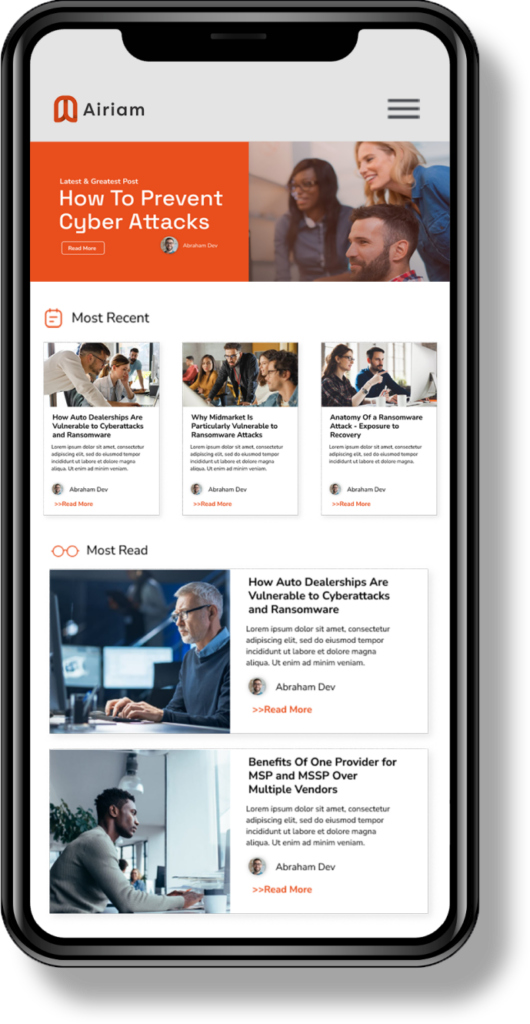Episode Summary
How do you build cyber resilience using AI? Airiam’s Solutions Architect, Tim Hetzel, joins Art Ocain to discuss what common AIs are used today in cybersecurity, how it’s used to automate and improve networks, and how it can be used to reduce costs.
Understanding AI and its Applications:
AI has experienced significant advancements in recent years, with notable examples such as Chat GPT and Bard gaining popularity. These AI models have found applications in a wide range of fields, including virtual assistants like Alexa and Siri. Comparing today’s phone assistant to a built-in Bluetooth in a 2011 car showcases convenience and evolution over the past decade. Today’s Google Assistant on an Android can be reliably transcribe notes, hands-free. However, Bluetooth car assistants from over 10 years ago can’t say the same.
The Role of AI in Fraud Detection:
AI’s role in fraud detection involves using machine learning algorithms to detect patterns and anomalies in fraudulent activities. Some examples of its daily usage are:
- Blocking suspicious credit card transactions
- Detecting impossible travel scenarios
- Captcha on websites verifying you are not a robot
- Google and Microsoft filtering out possible spam emails
- Social media systems identifying possible fake accounts
AI-powered systems have revolutionized fraud prevention. The sophistication of modern scams present larger challenges in terms of social engineering and phishing attempts.
AI and Security:
Undoubtedly, AI’s integration in security measures holds promise, especially in leveraging it to enhance network security and streamline incident response. Tools like AirCISO’s XDR platform and Horizon3 NodeZero automate vulnerability identification and provide intelligent prioritization based on contextual data specific to each environment. This empowers security engineers to respond faster and more effectively, focusing on the most critical vulnerabilities and potential threats.
The Need for Vigilance:
While AI brings immense benefits, it is essential to recognize that threat actors can also exploit these technologies. Hackers can utilize AI to craft convincing social engineering emails and bypass traditional security controls. Companies should emphasize critical thinking, verifying activities, and communicating with banks to counter fraud attempts effectively.
Additionally, another AI threat to keep in mind is the use of deepfake technology, which can create convincing fake videos and audio that may be exploited by malicious actors. Some malicious actors may call, email, or even text you to gain a sample of your voice and speech patterns to bypass some security systems.
Tips to Keep In Mind
Based on Art and Tim’s discussion, here are a few key things to keep in mind:
- Protect your personal information: Be cautious about sharing sensitive information online or over the phone, especially when unsolicited requests are made.
- Enable two-factor authentication (2FA): Whenever possible, enable 2FA for your online accounts, adding an extra layer of security by requiring a second form of verification.
- Keep your devices and software up to date: Regularly update your computer, smartphone, and other devices with the latest security patches and software updates. These updates often include important security fixes that can help protect against vulnerabilities that fraudsters may exploit.
- Exercise caution with unsolicited emails and messages: Be wary of emails, messages, or calls that ask for personal information, offer suspicious deals, or create a sense of urgency. Some hackers even spoof phone numbers to try and create legitimacy.
- Educate yourself about common scams and fraud techniques: Stay informed about the latest fraud techniques and scams that are prevalent. Familiarize yourself with common red flags and warning signs to help you recognize and avoid potential fraudulent activities.
By harnessing the power of AI for fraud detection, network security, and incident response, organizations can stay one step ahead in the ever-changing landscape of cyber threats. Remember, while AI can be a powerful ally, it is crucial to strike a balance between embracing its potential and staying aware of its vulnerabilities.
Video Version
Listen to more episodes at www.airiam.com/podcast, on Spotify, Apple Podcasts, Google Podcasts, Amazon Music, and other podcast platforms.


